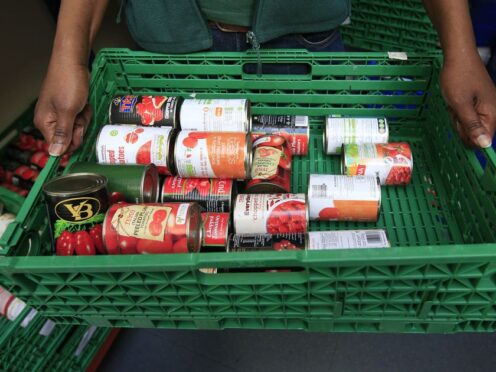A leading poverty charity has criticised “grotesque” figures which show income inequality is at its highest level in almost 15 years.
Oxfam Scotland’s analysis of official poverty statistics shows that after housing costs are considered, the top 10% of households had 53% more income than the bottom 40% combined in 2020-23.
It was up from 38% in 2019-2022 and was the highest rate recorded since 2007-2010.
When measured before housing costs are considered, it is the highest level since records began in 1994, with the top 10% having 34% more income than the bottom 40% combined – up from 18% in 2019-2022.
The analysis follows official data which estimated 1,110,000 people – 21% of people in Scotland – were living in relative poverty after housing costs in 2020-23.
Child poverty was estimated to be 24%, the equivalent of 240,000 children, in the same period, with little progress made compared to prior years.
Oxfam Scotland is now urging both the Scottish and UK governments to bridge the gap.
It said the UK Government can do this by introducing “common sense” tax reforms targeting capital gains, investment income and wealth.
The charity also criticised the upcoming cut to national insurance.
It said ministers in Scotland, meanwhile, must prioritise reform of “outdated” council tax instead of a rates freeze, which it argues does not do enough to support those on low incomes.
The Scottish Government’s introduction of a higher income tax band for the most wealthy was welcomed, but the charity said the impact has been “undermined” by the council tax freeze.
Lewis Ryder-Jones, advocacy adviser at Oxfam Scotland, said: “Inequality fuels poverty and harms Scotland’s economic prosperity too. Too many children born today have their future held hostage by the low income of their parents, their gender and their race.
“It’s morally grotesque that over a million people in Scotland are left locked in poverty while the gap between them and the richest grows ever wider. But it doesn’t have to be this way.
“Our political leaders will continue to tread water on tackling poverty until they take bold steps to address inequality.
“The Scottish Government must press the UK Government while ensuring its own upcoming tax strategy charts a new course, ensuring that every part of the devolved tax system helps to reduce poverty and inequality.
“Such action isn’t just a moral imperative, it’s an economic necessity. No longer can our economy be built on the survival of the richest.”
A Scottish Government spokesperson said: “Fair work is at the heart of the Scottish Government’s ambition to move towards a wellbeing economy that benefits employees and the planet alongside traditional economic indicators.
“Proportionately, Scotland has around five times more accredited real Living Wage (rLW) employers than the rest of the UK. Latest statistics show that nearly 90% of employees aged over 18 in Scotland are paid the rLW or above – the highest percentage of the UK nations.
“Tackling child poverty is a priority for the Scottish Government and the Scottish Budget 2024-25 unapologetically directs resources to those in greatest need, including a record £6.3 billion in social security.
“Recent modelling estimates Scottish Government policies will keep 100,000 children out of relative poverty in the coming year. This includes keeping 60,000 children out of poverty through our game-changing Scottish Child Payment, which will increase to £26.70 per eligible child from April.”
An HM Treasury spokesperson said: “Thanks to the tax cuts we’ve made, we’re putting £680 a year back into the pocket of over 2.4 million working people in Scotland – guaranteeing lower taxes for Scottish workers.
“We have provided one of the largest cost-of-living support packages anywhere in Europe over recent years, worth £3,800 per UK household between 2022 and 2025.
“This includes increasing working-age benefits by 6.7% and the state pension by 8.5% from April, extending the 5p cut and freeze to fuel duty and freezing alcohol duty.”
